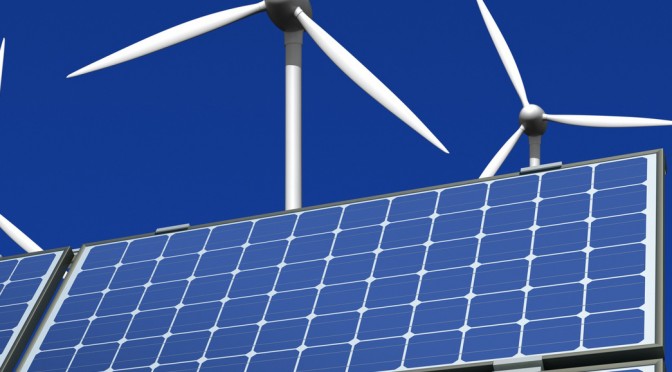According to a USAID report, Pakistan has the potential of producing 150,000 megawatts of wind energy, of which only the Sindh corridor can produce 40,000 megawatts.
Rich of solar power and wind energy resources having the capacity to generate around 143,000MW of electricity, the government has embarked upon various plans of attracting foreign investments to help bridge demand-supply gap by exploiting alternative energy potentials.
As per official estimates, the government is eyeing around $1.2 to $ 2.7 billion investment merely through wind sector, though dozens of identical projects are also on cards to woo foreign investment in solar energy sector.
Currently, Pakistan is developing wind power plants in Jhimpir, Gharo, Keti Bandar and Bin Qasim in Sindh what the government believes would not only reduce electricity shortages, but will also help ease the burden of oil imports costing over $12 billion annually.
The fair category of wind speed in most parts of the world is between 6.2 and 6.9 metres per second. There are a few places that come under good category where wind speed is between 7 and 7.3 m/s. However, the wind speed in the Sindh corridor is stronger than the above two categories and it stands in the excellent category that is between 7.5 and 7.7 m/s.
According to a USAID report, Pakistan has the potential of producing 150,000 megawatts of wind energy, of which only the Sindh corridor can produce 40,000 megawatts.
Keeping in view these rich potentials, the government has plans to achieve electric power up to 2500 MW by the end of 2015 from wind energy to bring down energy shortage.
Earlier, the former Prime Minister Yusuf Raza Gilani inaugurated country’s first-ever wind energy scheme `Zorlu Energy Wind Power Project’ with generation capacity of 50MW in Jhimpir on April 2009. The project is nearly 60 per cent complete and will start its trial production in current year.
This 60 kilometre long and 170 kilometre deep corridor alone has the potential to generate over 50,000 megawatts of electricity.
Pakistan Alternative Energy Development Board (AEDB) recently approved New Park Energy Phase I, a 400-MW wind project, near Port Qasim. With the help of China 3 Gorges Corporation, 50 MW wind energy plan at the point of Jhimpir in Sindh will be completed next year. The wind power pilot project has been made operational by installing a wind turbine at Daman-i-Koh in Islamabad.
Recently, an MoU has been signed at a two-day second Pak-China Joint Energy Group (JEWG) for setting up wind energy projects of accumulative capacity of 550MW initially. Moreover, the government has also created a fund to mainstream and implement alternative energy technologies in the country.
According to a study, the country has identified cumulative potential of generating 3.2 million MW from various renewable energy resources.
As per breakup, 340,000 MW could be generated from Wind, 2,900,000 from Solar, 50,000 MW from Hydro (large), 3,100 MW from Hydro (Small), 1800 MW from Bagasses Cogeneration, 500 MW from Waste while 550 MW could be generated from Geothermal.
A number of countries have successfully developed renewable energy sources based on wind, solar, biomassm, geothermal, oceantides and bio fuels to minimize dependence on fossil fuels.
The sources in energy sector said currently 11 wind projects of 556 MW cumulative capacity have reached advanced stage of completion and some of these would start supply electricity by December this year whereas the others would start working by 2013.
The government is determined to overcome the energy crisis in the country and has taken several measures in the past and has been carrying on several others to provide relief to the common man and help boost industry in the country, the sources added.
The government has initiated a fast track scheme to develop additional 1582.4 MW through private sector which would be commissioned by December 2013, the sources said adding that nine solar PV projects of 228 MW were also under development.
The government has also taken measures to promote use of solar applications that include solar systems, solar water heaters, solar water pumps in the country.
Pakistan is currently building solar power plants in Pakistani Kashmir, Punjab, Sindh and Balochistan and the program is under development by the International Renewable Energy Agency, China, and Pakistani private sector energy companies.
In May 2012 Pakistan stepped ahead by inaugurating the first ever solar power on-grid power plant in Islamabad. Over 12,000 solar water heater and 754 solar water pumps were imported to introduce the new technology besides reducing dependency on national grid station.
Efforts were also being made to convince the owners of sugar mills to use cane waste for power generation and two units of 34 MW were operational and three new projects were in advance stages.
Among the advantages of using solar energy is that beyond initial installation and maintenance, solar energy is one hundred percent free and that it does not require expensive and ongoing raw materials like oil or coal, and requires significantly lower operational labor than conventional power production.
Realizing country’s growing demand of the industrial and agricultural sectors and growing domestic consumption, the government has initiated several solar power projects to address the power shortfall and energy crisis.


